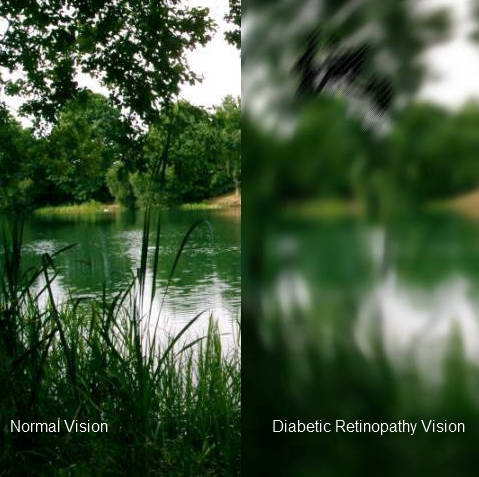JDRF Celebrates Healthy Vision Month!

Unfortunately, people living with type 1 diabetes (T1D) are at a much higher risk of developing eye disease. But we have come a long way in terms of treatments. Thirty-five years ago, the risk of vision loss from diabetic eye disease was 50 percent. Now, state-of-the-art care has cut the risk to 5 percent, and therapies to eliminate the remaining risk are in development.
T1D Eye Disease
High blood sugar can weaken the blood vessels in the eye and cause them to leak fluid or hemorrhage. New blood vessels proliferate to repair the damage but these are even more fragile. Vision loss occurs when fluid builds up near the macula, the area important for sharp focus, and when accumulating scar tissue contracts and leads to retinal detachment. It’s called diabetic retinopathy, and it is the leading cause of low vision and blindness in working-age adults.
Diagnosis
It is recommended that adults with T1D should have a comprehensive eye exam by an ophthalmologist within five years after diagnosis. If any level of diabetic retinopathy is present, subsequent examinations should be repeated at least annually. Laser therapy, as well as drugs that are designed to inhibit VEGF, may be required.
JDRF Discoveries
JDRF has funded eye disease research since we were established almost 50 years ago, including studies of Lucentis® (ranibizumab) and Eylea® (aflibercept). They are two approved therapies for diabetic macular edema and diabetic retinopathy and are designed to inhibit VEGF. Inhibition of VEGF limits the growth of new blood vessels on the surface of the retina. In the 1990s, JDRF supported multiple research grants that contributed to the knowledge that VEGF might be targeted to treat diabetic eye disease, and played a critical part in clinical studies that led to their approval.
The Moonshot Initiative
JDRF recently launched “Restoring Vision: A JDRF Moonshot Initiative,” and brought together more than 50 global experts in diabetes-related eye diseases and related disciplines, including physicians, engineers, cell biologists and technology experts—all with the goal of developing a research plan and taking necessary actions to create the means to reverse low vision and cure blindness in people with diabetes. The initiative honors late JDRF International Chairman Mary Tyler Moore, who was impacted by vision loss and wanted to help others avoid this T1D complication. We will be updating you regularly on this exciting Moonshot project.
Read our press release and our blog for more information on the Moonshot Initiative.